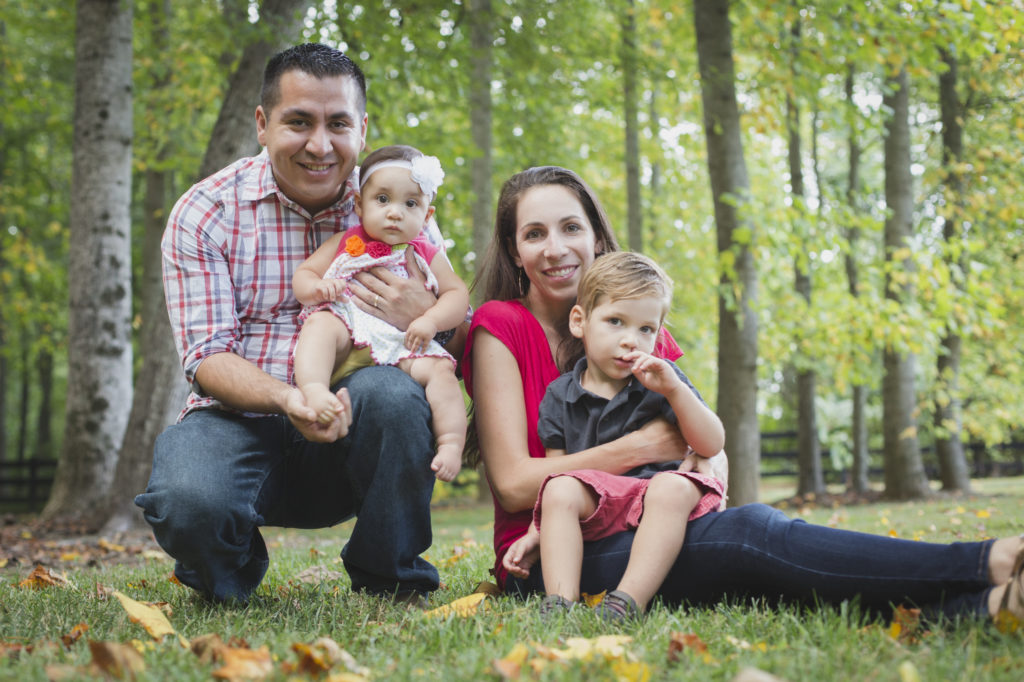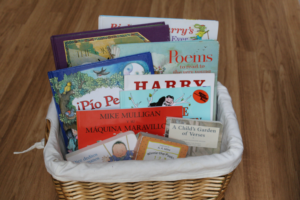When I was writing my first book, Raising Bilingual Children, I had the opportunity to meet a few non-Latino families raising children with two or more languages. In fact, one family, from India, is raising their two daughters with Spanish and English as their primary languages. Another family, both Caucasian, is raising their sons with English and Japanese.
A non-Latina’s quest for everything Spanish
Most recently, I had the good fortune of finding Elisabeth Alvarado, a teacher, blogger, and mother, raising bilingual children as a non-native speaker. She met her husband while teaching English in Peru, and they now live in the U.S. Elisabeth currently teaches middle and high school Spanish and develops materials on the side for Spanish learners of all ages. Her blog, Spanish Mama http://spanishmama.com/ offers information and tools for parents who are committed to teaching Spanish as a second language at home, and for teachers from Pre-K to high school that can use the weekly lessons in their classrooms. I caught up with Elisabeth via email and thought I would share her work with all the parents out there! Here is what she had to say:
MB: Where were you born?
SM (Spanish Mama) was born in Charlotte, NC, and grew up there as well.
MB: Were you raised bilingual, bicultural? What about your husband?
SM: Neither of us were! I learned a bit of Spanish in high school, and my husband Pocho, took a few English classes. We met each other when I moved to Peru to teach English, and could barely communicate at that point. It was mostly gestures. I learned Spanish living there for two years, and he learned English when he moved to the U.S. to marry me.

MB: How did you decide to start Spanish Mama?
SM: Growing up, I never felt like I had a “thing”– a talent, an instrument, or a sport I was good at. Even when I first moved to Peru, I never dreamed that learning and speaking Spanish would become a defining part of my life.
When my son was a baby, I knew we wanted be a bilingual family. I also thought trying to learn French with my kids, and immersed myself in blogs about learning languages and raising bilingual kids. I was learning so much and wanted to put all of this amazing information in one place.
I saw so much overlap between teaching Spanish and watching my own kids learn two languages at once. Parents don’t always know where to access resources the way teachers do, and teachers can learn from the natural process bilingual children go through. I like to find the connections between all these aspects of language acquisition.
MB: Do you think that today’s monolingual parents are more interested in raising bilingual children?
SM: From what I’ve seen, yes! I get a lot of readers who believe that starting Spanish at an early age is important, even if they’re not bilingual. I think technology is helping parents access resources, whether or not they speak the target language.
MB: Would you say that number has increased in the last 10 years? Why is that?
SM: I’ve only been blogging a few years, but there’s a visible growing interest. Many people see that multilingualism can increase career opportunities, and they wish their own language skills were stronger. Parents are also realizing that the cognitive effects of speaking a second language help develop well-rounded students, and reinforce language skills even in the first language.
I think parents also want to raise kids who think on a global level. Race and ethnicity are still challenging issues. Families want their kids to be open-minded and develop empathy for cultural differences, and they see being multilingual as a way to do that.
MB: Your site offers a myriad of resources for parents of children ages 0-12 and for teachers. How do you keep up with all the information you offer?
I teach high school and middle school, and come home to babies and preschoolers. I’m a verbal processor and like to write about everything I’m learning (if only for my husband’s sake!). A lot of my readers teach and have young kids as well, so it’s nice to have everything in one place.
Really, I have found that it is all connected. The same principles that help young children learn– songs, language in context, games– are best for older students as well.
MB: What is your favorite bilingual activity you do with your child?
SM: We love to read books. Books are wonderful anywhere, of course, but they are perfect for parents who are non-native speakers like me. I get to reread childhood favorites translated into Spanish, my kids hear rich language, and we all learn together!

MB: Favorite bicultural activity?
Does eating count? If so, then it’d have to be food! Mealtimes are mix of cultures for us and we eat a lot of Peruvian dishes, even living here. All the fiestas and get-togethers within our circle of friends are a blend of dishes and celebrations from Latin America and the U.S. I absolutely love that my kids get a rich mix of culture every weekend.
MB: Why do you believe in using poems as a language tool?
SM: I am resistant to our culture’s push for early academics. Rather, I see these young years as a time when children should be given plenty of beautiful things to love. They should be outdoors, and exposed music, rich language, and rhyme. Poetry, of course, fits right in!
I see a lot of parents and teachers getting hung up on children learning isolated facts or vocabulary, or analyzing. Poetry is different– poems and nursery rhymes are lyrical, linguistically rich, and delightful. They develop an ear for language and sounds, and give kids an instinct for what “good” language is.
My kids are very young still, but they know dozens of poems, rhymes, and songs in both languages. I love that they can sing traditional favorites with Grandma on both sides of the family, and will get the cultural references from both when they’re older.
I don’t stress about it, though! We recite poems and sing songs as we get dressed, eat breakfast, admire the moon, or watch the rain. I’ve had to learn all the Spanish ones, which helps me connect to Hispanic culture, and my husband has picked up a few English ones too.

MB: Tell us about Mi Vida Loca
SM: Mi Vida Loca is an interactive video series set in Spain. It takes learners through beginner-level Spanish themes told as a mystery.
I blogged about each episode, and shared songs and games to go with each one. There are lots of great resources out there for Spanish learners, but parents don’t always know where to find them like teachers do!
MB: What is your message for parents raising children in today’s world?
SM: We’ve always wanted to prepare our children for school and careers; let’s remember that kindness and empathy are just as important. Let’s raise kids who value their home and family traditions, while maintaining a curiosity about the people and world around them.
MB: What is your message for teachers in today’s global society?
SM: Actual communication– not just learning about Spanish– should be our goal. Focus on meaningful language in context, and use good stories, songs, and games whenever you can!
I think Elisabeth has great perspective, don’t you?
Let me know what you think.
Bai,Bai,
Maritere

